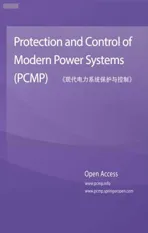Research on power control strategy of household-level electric power router based on hybrid energy storage droop control
2021-08-24KunHuangYanmanLiXiaoyanZhangLeiLiuYanbinZhuandXinMeng
Kun Huang,Yanman Li,Xiaoyan Zhang,Lei Liu,Yanbin Zhuand Xin Meng
Abstract In the light of user-side energy power control requirements, a power control strategy for a household-level EPR based on HES droop control is proposed, focusing on the on-grid, off-grid and seamless switching process.The system operating states are divided based on the DC bus voltage information with one converter used as a slack terminal to stabilize the DC bus voltage and the other converters as power terminals.In the on-grid mode, the GCC and the HES are used as the main control unit to achieve on-grid stable operation, whereas in the off-grid mode,the PV, HES and LC are used as the main control unit at different voltages to achieve stable operation of the island network.Finally,a DC MG system based on a household-level EPR is developed using the PSCAD / EMTDC simulation platform and the results show that the control strategy can effectively adjust the output of each subunit and maintain the stability of the DC bus voltage.
Keywords: Household-level electric power router,Hybrid energy storage, Droop control, On-grid mode, Off-grid mode
1 Introduction
The existing large power grid will remain the main part of the future energy Internet [5, 26].Despite the diverse forms of energy, electrical energy has great advantages in terms of transmission efficiency and economy.Electrical energy can also be easily converted to other forms(cold or hot) of energy.Therefore, the EPR as an energy conversion device has received increasing attention in industry and academia [22].
At present, the traditional distribution network is facing diverse problems and challenges.The fragility of the distribution network structure does not provide sufficient support to the access of a large amount of renewable energy, while the problems of poor node autonomy and low degree of freedom are becoming more serious[42].In addition, distributed generations have the characteristics of high uncertainty, high uncontrollability,wide distribution, remote location, harsh operating environment, low equipment reliability, and large operational and maintenance workload [27].The power system is also developing towards a new stage of coordinated and optimized “source-network-load-storage”operation, which will become the core of the future energy internet [1, 6].In the future, the power system will be formed by bottom-up autonomous units of electrical energy through peer-to-peer interconnection.Such open,interconnected, peer-to-peer and shared power systems require a high degree of integration of information and electrical energy, and precise, continuous, fast, and flexible control methods.The traditional grid-connected distributed power generation devices cannot realize the scheduling and independent management of the user’s electric energy, while the user side lacks equipment for implementing electric energy management and control.With this as background, the concept of “electric power router” based on power electronics technology has come to the fore [7].
As a key device of the energy Internet, current research on the power router is mainly focused on electrical topology and control strategy.In terms of electrical topology, references [8, 23, 43] propose a three-port DC converter with simple structure, flexible control, and easy implementation.However, its expansion is limited.In [39], a four-port converter with three input ports and one output port is proposed for application in the new energy power generation.It has high switch utilization, simple topology and high energy density, but the number of ports is limited and energy cannot flow in both directions.Four-port and three-port DC-DC converters with multi-winding high-frequency isolation transformers and high power density are proposed in [19, 30], respectively.The output of multiple voltage levels is realized through a multi-winding transformer.However,such converters require complicated parameter adjustment and have high production cost.Reference [28]describes a large-capacity MPC topology with an AC or DC bus, in which each port is connected with an AC or DC bus and bidirectional flow of energy can be realized.
The electric power router has evolved from the structure of a power electronic transformer, while its development process has gone through several stages of high-frequency transformer, fully electronic transformer,intelligent high-frequency transformer, high-voltage high-frequency transformer, and multi-port routing transformer.At present, an electric power router can implement intelligent management and control of distributed power generation equipment, energy storage and the existing power network, and realize an electrical energy dispatch control function.
The power router based on the multi-port routing transformer structure is generally used in small and medium power applications, and is suitable for power conversion and control between low-voltage power distribution system on the user side and household distributed power supply.The electrical topology of the existing power routers is largely mature, but research on the control strategy is urgently needed.This paper adopts a multi-port routing and transformer power router topology, which not only achieves the basic requirements such as voltage conversion, reliable electrical isolation, independent port design, and two-way energy flow, but also reduces equipment costs, improves efficiency, reduces size, and expands the flexibility of port use [9, 20, 24, 46].
A lot of research has been carried out on the power control strategy of an EPR.In [21], a coordinated control strategy based on a DC bus voltage signal is used, while the operation target and power distribution of the system are realized by using the cooperation of threshold voltage and droop control.In [25],the DC bus voltage is used to distinguish between on-grid and off-grid modes of operation, and the DCAC converter and energy storage unit connected to the grid are used to maintain the bus voltage.However, in the on-grid mode, the energy storage unit is always in a standby state with low utilization rate.In[14, 34], the droop control strategy is used to ensure a smooth transition of the DC bus voltage between different levels.However, since the working curve of each unit in the DC MG has to be predetermined,the flexibility of the system is low.
Most existing literature discusses the operation and control of a DC MG in island mode.Because of the lack of backup, when energy surplus or shortage occurs, system stability is poor and the application is limited.Studies on the operating status under direct grid connection are usually under the support of a large power grid, so the coordinated control of PV and other micro power sources and energy storage is ignored, and the influence of factors for energy storage batteries such as remaining capacity cannot be fully considered, causing battery damage and harm.
In summary, although the current technical specifications of the electrical energy router standard have not been uniformly formulated [10, 17, 29, 32, 37], a lot of work has been done on topology optimization and key technology analysis.This paper comprehensively considers the operating characteristics of the off-grid operation mode and integrates the converter control strategies into a household-level electric power router.Taking home user applications as the main operating scenario, two on-grid and 6 off-grid operating modes are designed.Various application scenarios are proposed,and the proposed control strategy ensures that the system can smoothly switch between the various working modes, and realize stable and reliable operation of the user system and the efficient use of energy.
The organization of the rest of the paper is as follows.The topology of a household-level electrical energy routing device is introduced in Section II and according to the system DC bus voltage information,the corresponding system power control strategy is proposed in Section III.In Section IV, a system model containing PV, hybrid energy storage, gridconnected converters, AC and DC loads is developed on the PSCAD / EMTDC simulation platform to verify the effectiveness of the proposed control strategy.Finally, Section V draws the conclusions.
2 Household-level electric power router
2.1 Topology of the household-level electric power router
The basic architecture of the household-level EPR is shown in Fig.1.As the “electric energy housekeeper” of home users, the household-level EPR is connected to the grid,PV,HES, AC loads and DC loads,and a representative application scenario is shown in Fig.2.
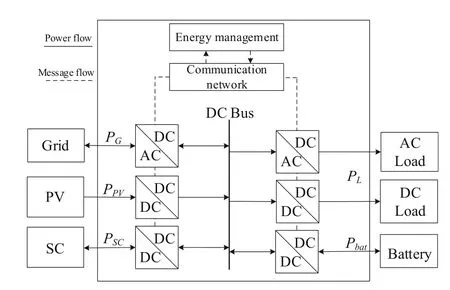
Fig.1 Basic architecture of household-level electric power router

Fig.2 Application scenarios of a household-level electric power router
The AC and DC loads mainly include heating, lighting,and other cold and hot electrical equipment.These loads operate normally when the system has sufficient electrical energy supply,but can be adjusted by an LC for reduced power operation when the system energy supply is insufficient.
2.2 Photovoltaic
The output I-V and P-V characteristics of the PV matrix are non-linear, resulting in a maximum power point which is determined by the light intensity and the ambient temperature [31, 38, 40].Considering the intermittency and fluctuation of light, the MPPT algorithm is adopted to enable the PV to generate the maximum power to meet the load demand and improve the system conversion rate.
The MPPT algorithm mainly includes the disturbance observation, conductance increase, and power feedback methods [13].Among them, the disturbance observation method is widely used because of its simple algorithm and easy implementation, independent of the electrical parameters of the PV array, and high tracking efficiency[3, 11, 12, 33].In this paper, an improved variable step size disturbance observation method is used, and its algorithm program is shown in Fig.3.As seen,the method measures the output voltage and current of the PV cell,and then calculates the output power.By comparing the absolute difference between the voltage amplitudes at the previous and current sampling, it makes a judgement on whether the PV cell is operating at the maximum power point.If not, a new value will be assigned to the reference voltage according to the formula given by step size.
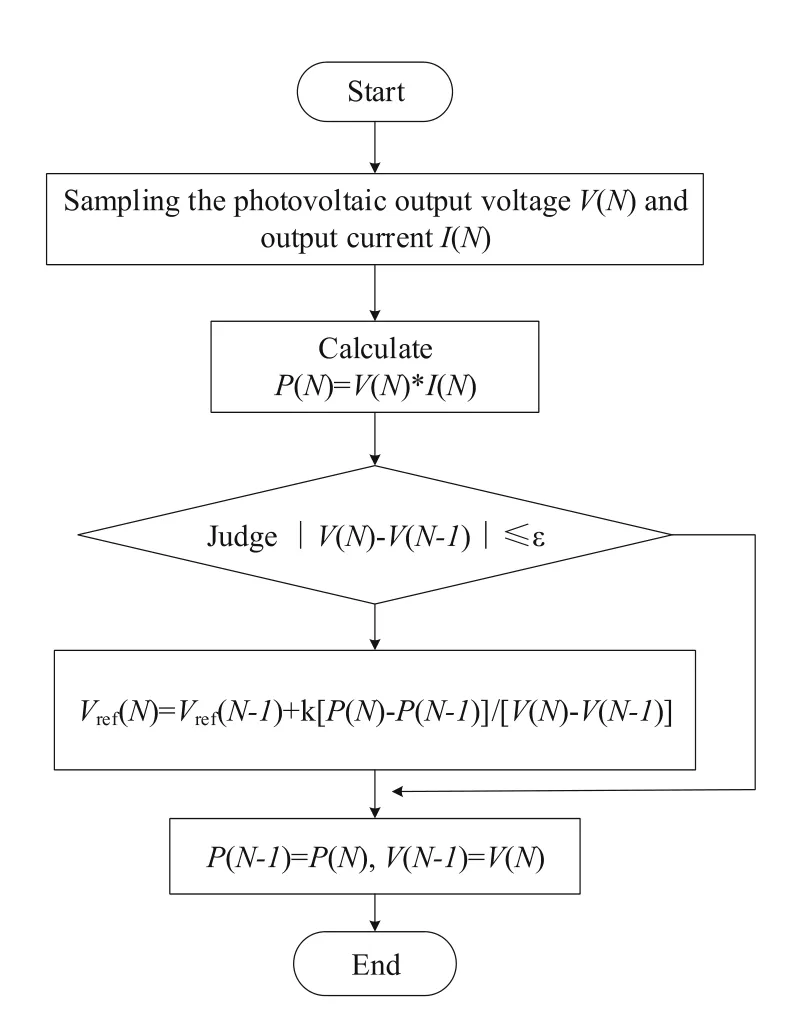
Fig.3 The principle of the improved variable step size disturbance observation method algorithm
2.3 Hybrid energy storage
Renewable energy sources have inherent characteristics such intermittency and variation, making it difficult for them to provide continuous and stable electrical energy.Therefore, when the MG system operates in off-grid mode, the energy storage unit is key to ensuring the stable operation of the system.However, it is difficult for any energy storage technology to consider all aspects such as safety and reliability, high power/energy density,high efficiency, long life, and low cost.Therefore, this paper uses a hybrid energy storage form of lithium battery and super capacitor to benefit from the advantages of the different energy storage technologies to meet the needs of power and energy.This is the development and application trend of distributed energy storage technologies [41].
Lithium battery energy storage is an energy-type energy storage with high energy density, but low power density.It is suitable for applications with high energy demand where energy storage needs to provide longterm electrical energy support.Deep discharge and high current charge and discharge can seriously shorten the battery life.On the other hand, SC is a power-type energy storage with high power density, but low energy density.Thus, it is suitable for applications with high power demand in a short time, such as improving power quality and providing fast power support.Combining a lithium battery and an SC as a hybrid energy storage system can take the advantages of the two, with improved utilization efficiency and reduced number of charges and discharges for extended service life.
According to the concept of droop control [2, 16], the droop characteristics of an SC charge/discharge power-DC bus voltage (PSC-Udc), lithium battery charge/discharge power-SC voltage (PBat-USC) are shown in Fig.4,and their mathematical expressions are given as:
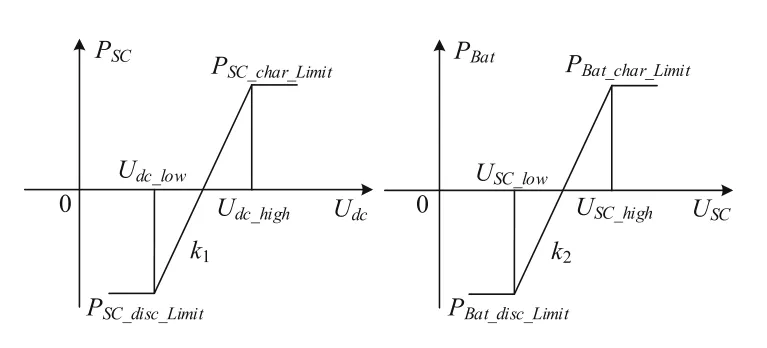
Fig.4 Droop control characteristic curve of hybrid energy storage

where PSC、PSC_disc_Limit、PSC_char_Limit、PBat、PBat_di-sc_Limit and PBat_char_Limitrepresent SC power, SC maximum generating power, SC maximum charging power,lithium battery power, lithium battery maximum discharge power, and lithium battery maximum charging power, respectively.Udc、Udc_low、Udc_high、USC、USC-lowand USC_highrepresent DC bus voltage, DC bus voltage lower limit, DC bus voltage upper limit, SC voltage, SC voltage lower limit, and SC voltage upper limit,respectively.k1and k2represent the sagging coefficients of the sagging characteristic curves of PSC-Udcand PBat-USC, respectively.C1, C2are constants representing the intercepts of the sagging characteristic curves of PSC-Udcand PBat-USC, respectively.
From the hybrid energy storage sagging characteristic graph in Fig.4, the hybrid energy storage converter control circuit is shown in Fig.5.The lithium battery and the SC are connected in parallel to the DC bus through converters, and the charging and discharging power is adjusted according to the magnitude of their DC bus voltages.

Fig.5 Hybrid energy storage droop control strategy
2.4 Grid-connected converter
In order to ensure the stable transmission of electrical energy during the grid connection process, in this paper,the GCC uses power droop control in the on-grid mode.The droop characteristic of the grid-connected converter power-DC bus voltage (PGCC-Udc) is shown in Fig.6 and its mathematical expressions are given as:
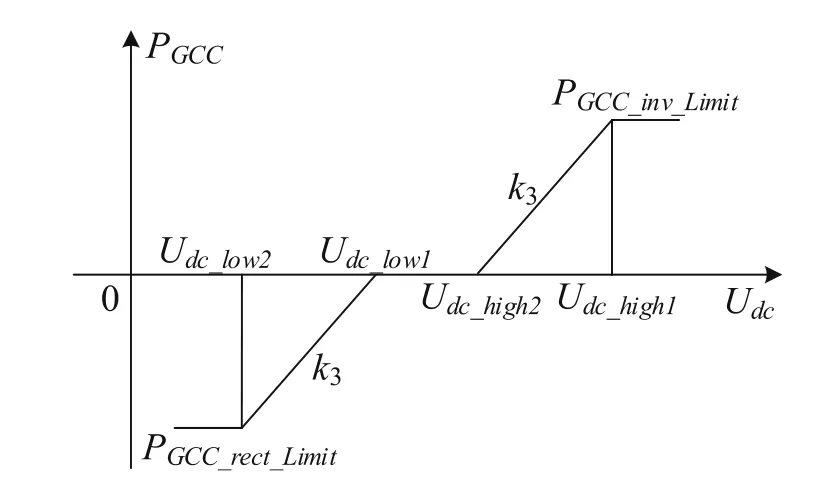
Fig.6 Droop control characteristic curve of GCC

where PGCC、PGCC_rect_Limitand PGCC_inv_Limitrepresent the converter power, maximum converter power in rectifier mode, and maximum converter power in inverter mode, respectively.Udc_low1、Udc_low2、Ud-c_high1、Udc_high2represent the DC bus voltage lower limit 1, 2 and upper limit 1, 2, respectively.k3represents the sag coefficient of the PGCC-Udcsag characteristic curve, while C3and C4are constants and represent the intercepts of the PGCC-Udcsagging characteristic curve, respectively.
According to the detected AC side current which serves as the feedback and control quantities, the control strategy of the GCC can be divided into “indirect current control” [18]and“DC current control”[35].The indirect current control strategy does not need to detect the AC side current as feedback.The control principle is simple and reliable, but the AC side current dynamic response is slow so it can only be used in applications where fast system dynamic response is not required.Compared with indirect current control, DC current control introduces AC side current feedback, and the system’s AC side current dynamic response speed is fast [44].Therefore, this paper uses a vector decoupling direct current control strategy based on the dq coordinate system, as shown in Fig.7.

Fig.7 Vector decoupling direct current control strategy based on dq coordinate system
3 Energy management control strategy for a household-level electric power router
For the DC MG, since there is no need to consider reactive power, the DC bus voltage is the most important indicator and reflects the balance of system power [4].Distributed power sources in the MG, random changes in load power, and power exchange with the external grid all have a certain effect on the bus voltage.By decoupling the distributed power, energy storage, load, and the exchange power of the MG and the distribution network, the DC bus equivalent circuit of the DC MG can be obtained [45].
According to the system power balance, the power of the DC bus equivalent capacitance C is:

where PC、 PPV、 PG、 PHESand PLrepresent the power of the DC bus equivalent capacitance, PV generation, grid, hybrid energy storage, and load, respectively.
The relationship between the DC bus voltage and DC bus equivalent capacitance power is:

If Udcremains stable, i.e., dUdc/dt=0, there is:

To ensure power balance the current of the mixed energy storage is:

where IHESrepresents the mixed energy storage current.As long as the energy storage system can provide enough current, the DC bus voltage can remain stable regardless of the changes in PV power and load.However, because of the limit on the current of the energy storage system, the DC bus voltage can fluctuate and thus other controls must be incorporated so the DC voltage can still be stabilized within a certain range.
Based on the characteristics of household-level electrical energy management and the requirements of DC MG control, this paper proposes a power control strategy for a household-level EPR, as shown in Fig.8.Its flow chart is shown in Fig.9.The system operation mode is divided into on-grid mode and off-grid mode,and the DC bus voltage is divided into three parts within the allowed variation range of Udc_low, Udc_rateand Udc_high.Thus the system is divided into six operational modes.In each mode of operation, a slack terminal is assigned to stabilize the bus voltage while the other distributed units provide power output.When the slack terminal cannot stabilize the bus voltage in each operational mode, the system enters other working areas.
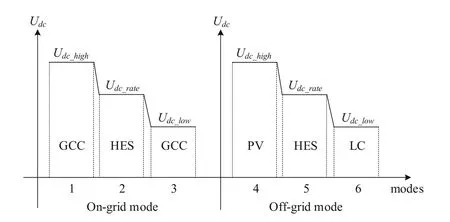
Fig.8 Power control strategy for a household-level EPR

Fig.9 Flow chart of Power control strategy for a household-level EPR
(1) In the on-grid mode, PV always adopts the MPPT control strategy.When Udc≥Udc_highor Udc≤Udc_low,GCC is used as the main control unit of the system,adopting the droop control strategy, and when Udc_low≤Udc≤Udc_high, HES is used as the main control unit, it adopts the HES droop control strategy.
(2) In off-grid mode, GCC is out of service.When Udc≥Udc_high, PV is converted from MPPT operation to power reduction control.When Udc_low≤Udc≤Udc_high,HES is used as the main control unit, adopting droop control, and when Udc≤Udc_low, system LC performs a load shedding operation to maintain bus voltage stability.
Table 1 summarises the different operational mode for each of the units during on-grid and off-grid operations.The switchover of the on/off-grid mode mainly depends on actual user needs and operating status (overhaul,fault) on the grid side.Regardless of the mode of operation, the system operating state is adjusted based on the DC bus voltage.In any operating state, at least one converter is used as a slack terminal to stabilize the DC bus voltage, while the other converters are used as power terminals to provide power to the system.

Table 1 Classification of each unit’s operational states

Table 2 Simulation parameters of household-level EPR
3.1 On-grid mode
In the on-grid mode, household-level electrical energy routing devices follow the principles of “spontaneous self-use, excess online access”, and “time-sharingelectricity use, peak-valley arbitrage”.The load preferentially uses the power generated by PV, followed by the grid.The GCC acts as a slack terminal to maintain the voltage stability of the DC bus, while to ensure the utilization efficiency of renewable energy, PV always use MPPT control to generate electricity.Any surplus electric energy from PV can be stored in energy storage batteries or integrated into the power grid for economic operation of the system.
3.1.1 Scenario 1
When the light conditions are good, the power generated by the PV is given priority to the user’s load.The specific energy optimization management strategies are as follows:
(1) HES does not reach the maximum power of charge and discharge
①The power of PV is greater than the power required by the load.
The PV power generation is given priority to the load and the surplus power is used to charge the hybrid energy storage.The surplus PV power not being completely absorbed is then integrated into the grid.The energy flow diagram is shown in Fig.10(a);
②The power of PV is less than the power required by the user load.
The power of PV is used to charge the battery while the user load is supplied by the grid.The energy flow diagram is shown in Fig.10(b).
(2) HES reaches the maximum power of charge and discharge
①The power of PV is greater than the power required by the user load.
The power of PV is given priority to the load and the surplus power is transmitted to the grid.The energy flow diagram is shown in Fig.10(c);
②The power of PV is less than the power required by the user load.
PV and the grid supply the load together, and the energy flow diagram is shown in Fig.10(d).
3.1.2 Scenario 2
At night,the grid supplies power to the load,and the energy strategy is as follows:
(1) HES does not reach the maximum power of charge and discharge
The grid supplies power to the load and also charges the battery.The energy flow diagram is shown in Fig.10(e);
(2) HES reaches the maximum power of charge and discharge
The grid supplies power to the load, and the energy flow diagram is shown in Fig.10(f).
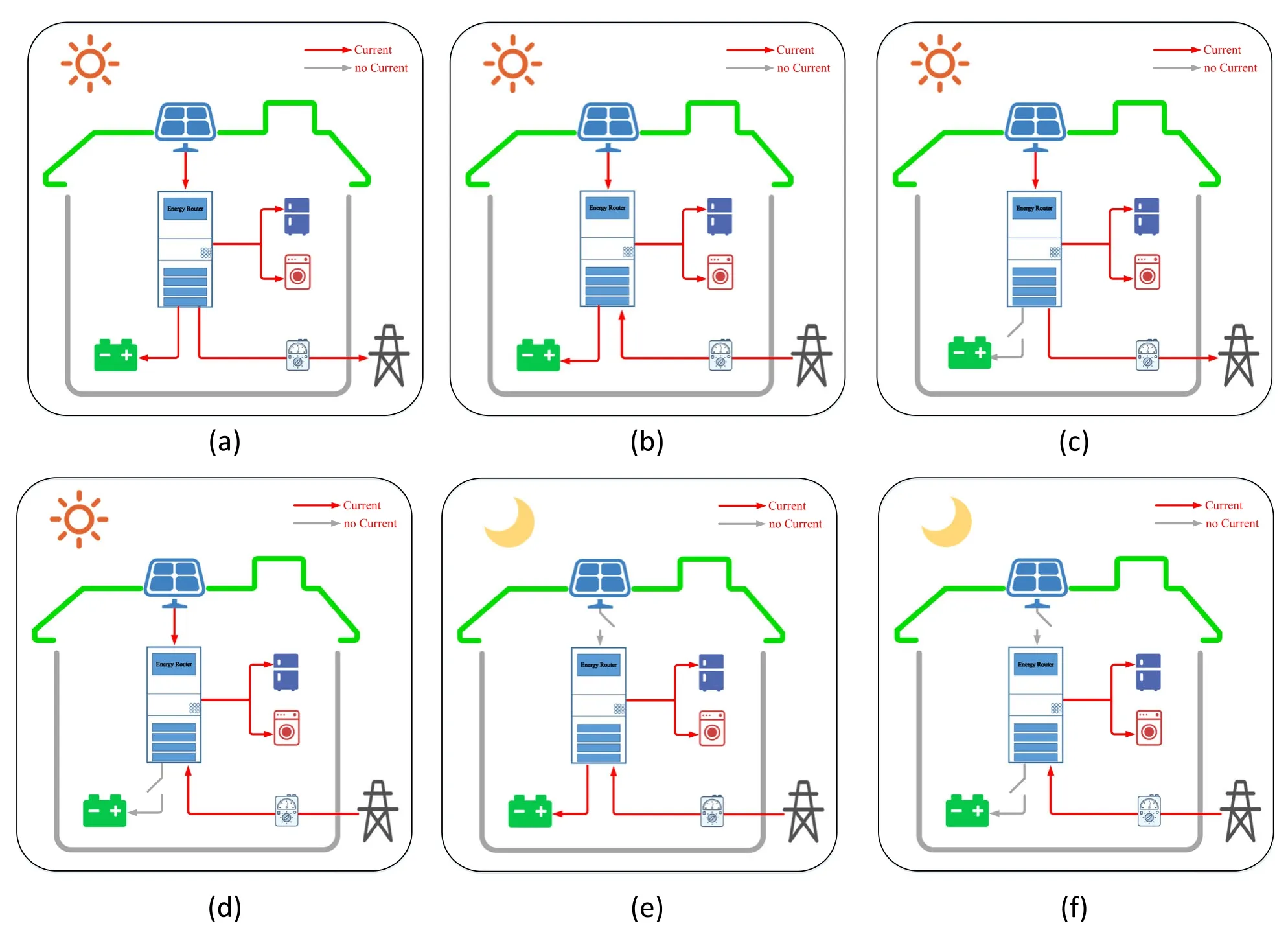
Fig.10 Energy flow diagram in on-grid mode
3.2 Off-grid mode
In addition to the planned off-grid, when the grid fails, the household-level electrical energy routing device automatically changes from the on-grid mode to the off-grid mode.In the off-grid mode, the load uses PV power generation first, followed by hybrid energy storage.
In the off-grid mode, the PV cell generates power under MPPT control.The hybrid energy storage unit becomes the slack terminal and the main control unit of the system.This is responsible for maintaining the stability of the bus voltage.If the remaining power reaches the regulation limit of the hybrid energy storage power, it switches from droop control to constant power charging and discharging according to the system state, and the PV cell will turn to constant voltage control.When the remaining power of the system is much smaller than the load, the LC performs a load shedding operation.
3.2.1 Scenario 1
3.3 The power of PV is greater than the power required by the user load
The EPR stores the surplus power in the energy storage unit, and the energy flow diagram is shown in Fig.11(a);

Fig.11 Energy flow diagram in off-grid mode
3.4 The power of PV is less than the power required by the user load
The HES and PV supply the load together.The energy flow diagram is shown in Fig.11(b).
3.4.1 Scenario 2
At night or in cloudy conditions, the PV has no output and the HES supplies power to the load.The energy flow diagram is shown in Fig.11(c).
4 Results and discussions
To verify the power control strategy of the householdlevel EPR based on the HES droop control proposed in this paper, a household-based EPR model is built in PSCAD/EMTDC according to the topology shown in Fig.1.A preferred 750 V in the low-voltage power supply system is selected as the rated voltage of the MG DC bus [36].The system simulation parameters are shown in Table 2.In Figs.12, 13, 14, the net power Pnetequals Ppv minus Pload.
4.1 On-grid operational status
The simulation results of on-grid operation are shown in Fig.12, in which the PV always operates in MPPT mode.As seen, during 0.2~0.6 s, the net power of the system is positive, so the DC bus voltage rises slightly.Specifically, during 0.2~0.4 s, the DC bus voltage is maintained at 752 V, the HES is used as a slack terminal, and the droop control method is used to charge and discharge to maintain the stability of the bus voltage.During 0.4~0.6 s, the DC bus voltage is maintained at 757 V, while the GCC acts as the main control unit whose power transmission to the grid is controlled to maintain the stability of the DC bus voltage.During 0.6~1.0 s, the net power of the system is negative and the DC bus voltage drops slightly.During 0.6~0.8 s, the DC bus voltage is maintained at 749 V whereas during 0.8~1.0 s, it drops to 745 V.The HES and GCC serve as the slack terminal in the two stages, respectively.
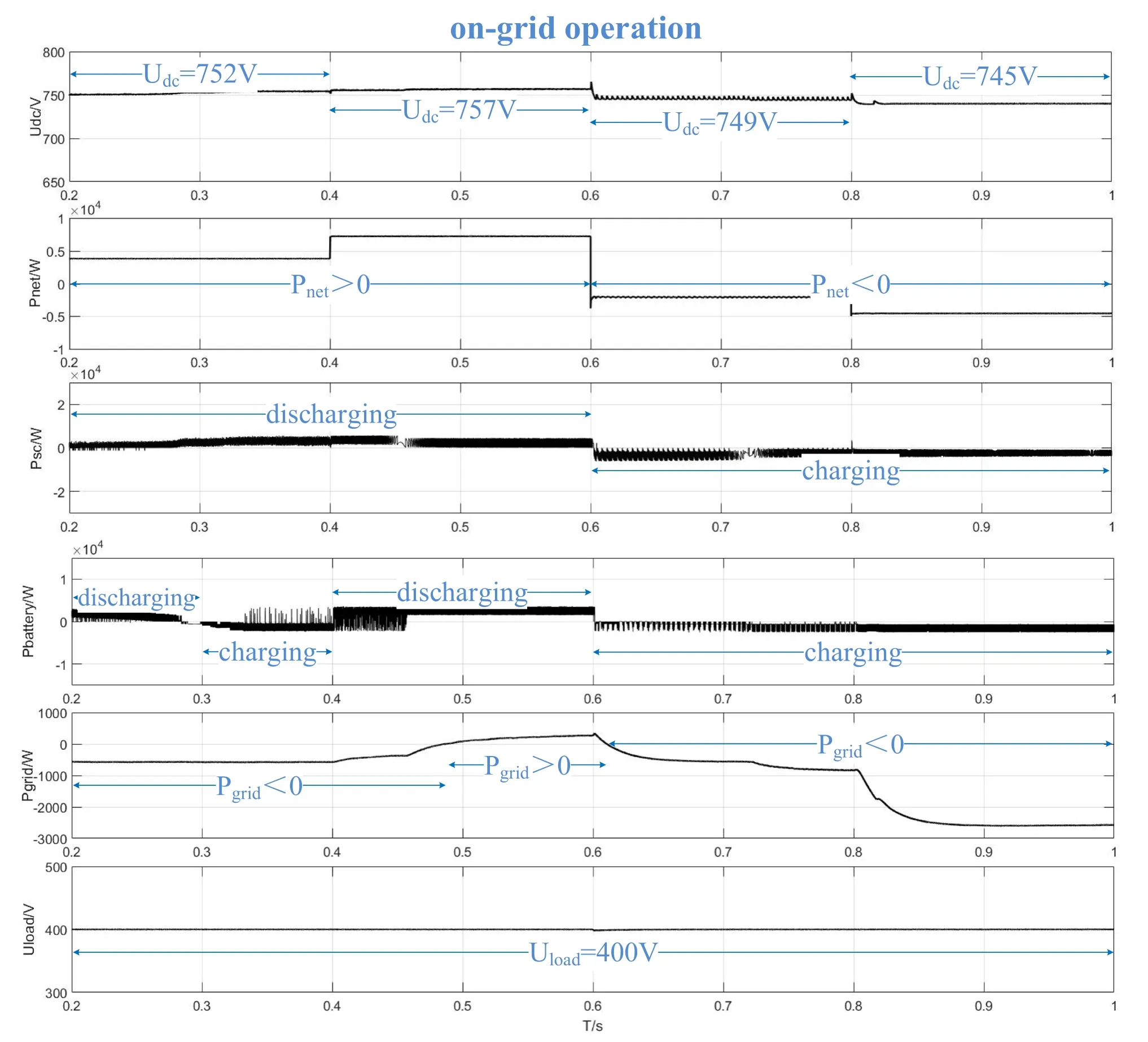
Fig.12 Simulation results of on-grid operation
4.2 Off-grid operational status
In off-grid mode, the GCC is not enabled and simulation results are shown in Fig.13.As seen, during 0.2~0.4 s,the DC bus voltage is maintained at 752 V, the HES is used as a slack terminal, and the droop control method is used to charge and discharge to maintain bus voltage stability.During 0.4~0.6 s, the DC bus voltage is maintained at 756 V, while the PV becomes the main control unit of the system by adopting a reduced power with constant voltage control to stabilize the DC bus voltage.During 0.6~0.8 s, the DC bus voltage is maintained at 752 V.As Pnetis decreased, the PV is switched back to MPPT control and HES becomes the main control unit.During 0.8~1.0 s, the DC bus voltage continues to decrease, and the load controller performs load shedding to maintain the bus voltage.

Fig.13 Simulation results of off-grid operation
4.3 On-grid and off-grid seamless switching
In order to verify the feasibility and stability of the system and off-grid switching, the system operational mode is simulated and verified, as shown in Fig.14.As seen,during 0.2~0.4 s, the system operates in on-grid mode,and the DC bus voltage is maintained at 752 V.During 0.4~0.8 s, the system operates in off-grid mode.So as seen, during 0.4~0.6 s,the DC bus voltage is maintained at 753 V and during 0.6~0.8 s, Pnetis negative and the DC bus voltage drops to 746 V.During 0.8~1.0 s, the system goes back to on-grid operation, Pnetis positive and the DC bus voltage rises to 753 V.
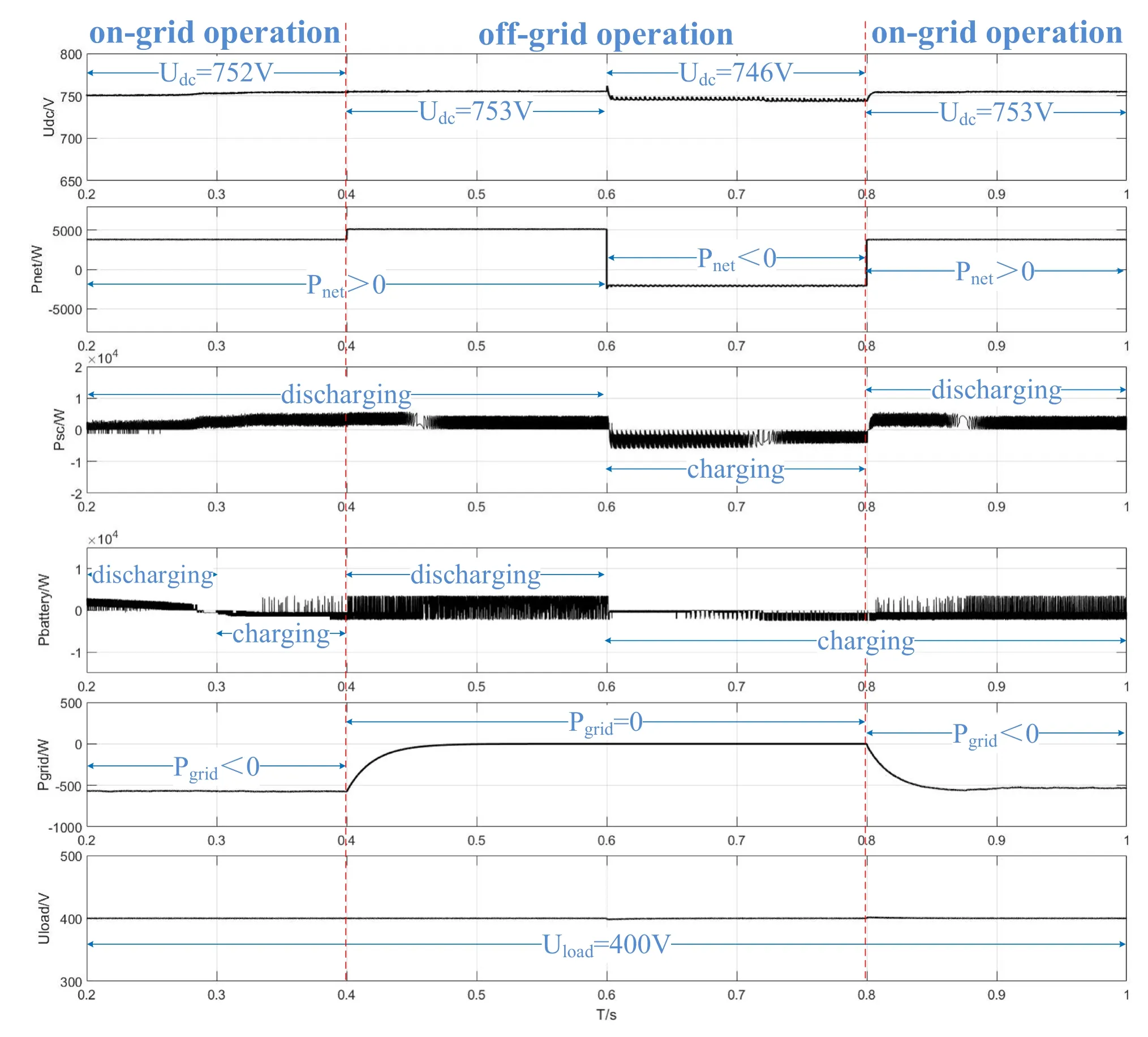
Fig.14 Simulation results of on-grid to off-grid and then to on-grid switching
5 Conclusions
The rapid development of PV and other intermittent renewable energy power generation technologies requires power control from the user side to ensure system stability and supply security.Therefore, this paper proposes an energy power control strategy based on HES droop control for the household-level EPR and a user’s actual operating scenario.The proposed strategy is verified through simulations.The simulation results show that:
(1) In on-grid mode, under the support of the grid, the system can better maintain DC bus voltage stability and achieve stable operation under severe operating conditions such as a rapid decrease of PV output power;
(2) In off-grid mode, the fluctuation of PV output has a great impact on the system DC bus voltage.
(3) (3) The DC bus voltage fluctuations are small during on and off-grid switching, and seamless switching is achieved.The types of user-side loads are increasingly diversified and intelligent.Thus how to classify and manage user-side loads will be the focus of future research.
Abbreviations
MG: Microgrid; PV: Photovoltaic; SC: Supercapacitors; EPR:Electric power router; LC:Load converter; HES:Hybrid energy storage; MPPT: Maximum Power Point Tracking; GCC: Grid-connected converter; I-V:Current-voltage; PV: Power-voltage
Acknowledgments
This work is supported by National Key R&D Program of China(2018YFB0905000) and Science and Technology Project of State Grid Corporation of China (SGTJDK00DWJS1800232).
Authors’ contributions
K.Huang and Y.Li, the main authors of this study, their contributions included the model building, operation mode design and the paper writing.X.Zhang and L.Liu, they guided the study at all stage and improved the text.Y.Zhu and X.Meng, the supervisors of the study, they reviewed and improved the text.And Y.Zhu is the corresponding author.The authors read and approved the final manuscript.
Funding
National Key R&D Program of China (2018YFB0905000).Science and Technology Project of State Grid Corporation of China(SGTJDK00DWJS1800232).
Availability of data and materials
All data generated or analyzed during this study are included in the published article (and its supplementary information files).
Declarations
Competing interests
The authors declare that they have no competing interests.
杂志排行
Protection and Control of Modern Power Systems的其它文章
- A comprehensive review of DC fault protection methods in HVDC transmission systems
- Application of a simplified Grey Wolf optimization technique for adaptive fuzzy PID controller design for frequency regulation of a distributed power generation system
- A critical review of the integration of renewable energy sources with various technologies
- Operational optimization of a building-level integrated energy system considering additional potential benefits of energy storage
- An integrated multi-energy flow calculation method for electricity-gas-thermal integrated energy systems
- Sliding mode controller design for frequency regulation in an interconnected power system
